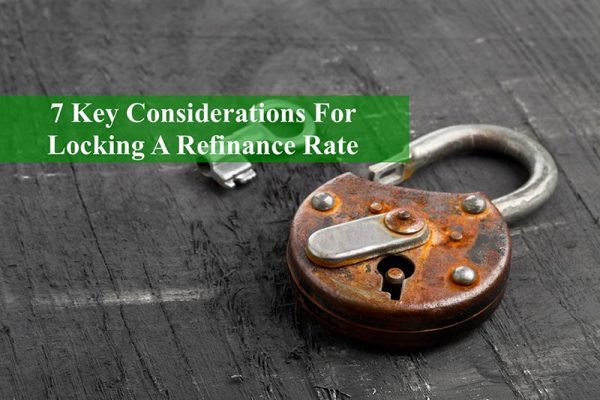No Obligation and transparency 24/7. Instantly compare live rates and costs from our network of lenders across the country. Real-time accurate rates and closing costs for a variety of loan programs custom to your specific situation.

Loan rates are down, and you want to take advantage of this fact. You’ve given your loan application package to your loan officer and there’s nothing to do now but wait for the process to run its course, and start racking up the savings, right?
Not quite. You still have some decisions to make about your new loan—and you’ll be better equipped to do that when you understand how mortgage refinance rates work. Here is what you need to know.
The lender who makes your loan will not be your “forever” lender; your loan will be sold to an investor at whatever price the market determines at the time of sale. Lenders look at the price of mortgages every day when they prepare their rate sheets.
Almost all mortgages are pooled into bonds called Mortgage Backed Securities (MBS). The price of these bonds fluctuates according to the investors buying and selling them. When the price of the bond goes up, the lender knows they’ll be able to get a higher price when they sell your loan, and they pass that improvement on to you in the form of better pricing—a lower rate.
Interest rates change every day. Mortgage lenders adjust their rates—a more accurate term is pricing—according to what the market is doing. You can easily track rates yourself over time, or simply see what today’s rates are at a glance.
However, a lock will help you capture the rate you want in case rates change before you close. In order to guarantee your pricing, you must lock your rate. This means that the lender is committed to give you that loan pricing even if rates get worse. Without locking when you have a great rate, you may have to lock in something worse later. After all, you must always lock your loan before you can order the closing documents.
For each type of mortgage, there are many rates, not just one. Each interest rate has associated with it a certain number of discount points (one point is one percent of the loan amount) or rebate. You can get a lower interest rate by paying discount points. Conversely, if you select a slightly higher interest rate, the lender will pay you a rebate. That rebate will offset some or all of your loan’s closing costs.
You will lock your rate for a specified period—usually 30 to 45 days, but most lenders allow longer or shorter periods. Once you lock your rate, the lender must give you that pricing—so long as you can complete your loan and close escrow within the allotted time. You must allow enough time for the lender’s underwriter to review your application, for the appraiser to do his report confirming the value of your property, and the many other steps that happen behind the scenes.
Although you can lock for an extended period of time—60, 90 and 120-day locks are generally available—the cost is proportional to the lock time. For a 60-day lock, expect to pay about .5% more in fee compared to a 30-day lock. However, if you opt for a 30-day lock because of the lower cost but have to extend because of delays, you’ll pay around .14% to extend for a week. That would be $560 additional cost for a $400,000 loan.
Because the mortgage process is more complicated today than in years past, delays can happen. The underwriter may ask the appraiser for additional data, for example. New regulations also cause delays. This means that you may not be able to close before your lock expires.
If that happens, you will have to extend your lock—and that will cost you. Extending your lock a week could cost as little as .1% of the loan amount or as much as three times that amount. The lender charges additional fees to extend your rate lock because it actually costs them money to lock the rate in the first place.
Your best strategy is to choose a lock period that you and your loan officer are confident about so you don’t have to extend. For more information about loan pricing and rate locks for your personal needs, you’ll want to consult an experienced loan officer.
There’s plenty you can learn on your own, too. To equip yourself with more of the crucial knowledge you’ll need to master refinancing and stay in control of your refinance rate, check out our ebook Time The Market: When To Refinance And Lock A Rate.
Are you thinking about refinancing your mortgage? We can help. Sammamish Mortgage has been serving buyers across the Pacific Northwest since 1992. We serve all of Washington, Oregon, Idaho, and Colorado and provide borrowers with several mortgage programs. Get in touch with Sammamish Mortgage today to refinance, apply for a new loan, or simply to have your questions answered.


Whether you’re buying a home or ready to refinance, our professionals can help.
{hours_open} - {hours_closed} Pacific
No Obligation and transparency 24/7. Instantly compare live rates and costs from our network of lenders across the country. Real-time accurate rates and closing costs for a variety of loan programs custom to your specific situation.